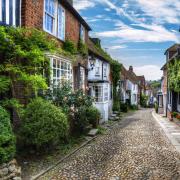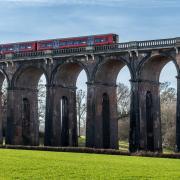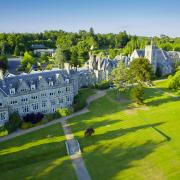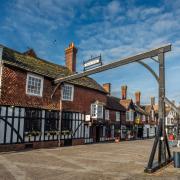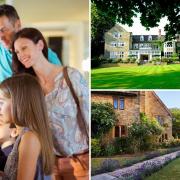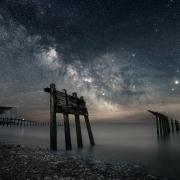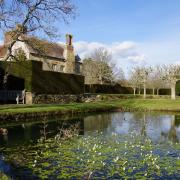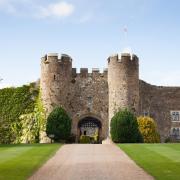Visiting this picturesque town with its cobbled streets, jumble of fine Georgian and medieval house and tales of smugglers and pirates, is the closest thing to experiencing time travel. But Rye isn't just for history buffs as it has oodles of charm and plenty to see and do.

RYE WINDMILL
Sitting on the River Tillingham, next to the railway line, Rye Windmill, a Grade II listed-building is now a quaint B & B. It sits on an historic site in Gibbet’s Marsh where a windmill has stood since the 16th century. It became a bakery until one Friday 13th in 1930, the ovens of the bakery overheated and destroyed the wooden structure, leaving just the two story brick base. The mill was reconstructed in 1932 and became a bed and breakfast in 1984. The original oven doors can be seen in the base of the Windmill.

THE LANDGATE
The Landgate, dating from 1329, is the last remaining gate built to defend the town from potential invaders. There were originally four of them built during the reign of King Edward III. It’s incredible that it still stands and is in daily use and driven past by hundreds of vehicles.

SAINT ANTHONY
Saint Anthony, a house in the corner of Church Square, is a marvellous original timber-framed Tudor house dating from the 1500s. Given the style, size and location, this house probably once belonged to a wealthy local merchant.

CHURCH SQUARE
Church Square is one of Rye’s many beautiful spots. As the name suggests, the square surrounds St Mary’s churchyard and looks like a film set. Half-timbered ancient buildings are everywhere you look. Visitors are amazed that this is still an actual living community here.

YPRES TOWER
The scheduled ancient monument Ypres Tower stand just over the road from St Mary’s Church. It was built in about the 13th century and is also known as Rye Castle. It once belonged to a man called John de Iprys after whom it is named, and not the famous Belgian city and site of a notorious battle during World War 1. It later became the town prison and then the town morgue until the turn of the 20th century.

MERMAID INN
The Mermaid Inn is one of the south’s most famous pubs. It started life in the 12th century, but, as a sign outside says, it was ‘rebuilt in 1420’. It even has original cellars dating from 1156. There are claims that the building is haunted by members of the notorious smugglers the Hawkhurst Gang who terrorised the southeast coast from 1735 until 1749. They’d drink in the Mermaid Inn with their loaded weapons on the table in case of trouble.

MERMAID STREET
One of the country’s prettiest and most-photographed streets, Mermaid Street, is a cobbled lane full of ancient timber-framed buildings, Georgian houses and tales of smugglers and reprobates. What’s not to like? It was originally called Middle Street, but it’s thought the change came after the establishment of the Mermaid Inn. Back then, this was known as the rough end of town. That’s certainly not the case anymore.

THE OLD BELL INN
Built in 1390, The Old Bell Inn is a splendid example of an historic building still being used and frequented by locals and visitors alike. Was it once a den of iniquity for smugglers? I think it’s now safe to say it was! It was one of the bases of the infamous Hawkhurst Gang of Sussex smugglers in the 16th century. It’s Grade II listed now, of course. The pub’s name comes from an event in 1377, when there was a French raid on the town, resulting in the bells of St Mary’s Church being looted and the town set on fire. The following year, local men sailed to France and recovered the church bells and other stolen goods.

Rye resident Simon Parsons: ‘It’s a very rich historical town and has lots going for it in terms of the culture and vibrancy of a small town. It used to be a big fishing town. Now it’s all about tourism, arts and culture with all the festivals that go on. There’s a big restaurant scene here and they survive because of the tourists. We all have our local favourites but there must be a dozen or more places in Rye and they will all be busy.’

Rye resident Kathy Hoggart: ‘I love the history, the way it looks and the fact that it can’t be spoiled because it’s protected. There is so much to do here. I help out at the Heritage Centre and the food bank as well as work. It’s a lovely community.’



